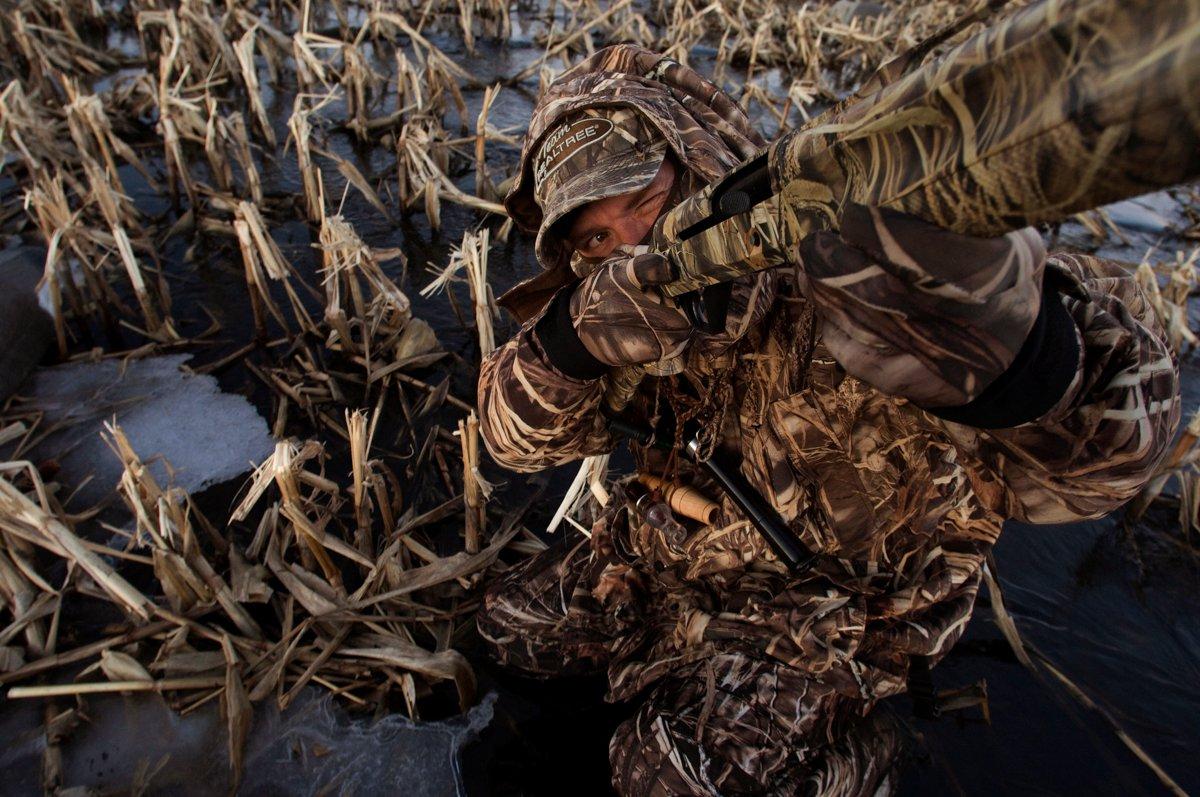Here's how to recover when your first round doesn't connect
If you've spent much time standing in timber or crouched in the cattails, you've done it. Birds pile into or zip over your decoys, and you — supremely confident — rise, swing and whiff with your first shot.
Surprise and embarrassment follow, but here's the good news: Unless you're toting a single-shot, you still have one or two more shots to put a bird or two on the strap. Here's how to overcome first-shot misses and execute successful follow-ups.
Eschew the Gaffe
The obvious cure is to avoid follow-up shots. As birds approach, don't think about three shots. Instead, act as if you have only one shell. Your approach will change considerably, and you'll find yourself identifying the best opportunity, taking only a quality shot and executing it with more precision.
Too often, we get excited when several birds come into range or tell ourselves we must hurry when a swift duck zips past. Take a careful, analytical but natural approach to every first-shot opportunity. If you capitalize, you can focus on subsequent opportunities.
Don't Panic, Measure
OK, let's assume you blow your first shot. Instinctively, you'll probably squeeze off two more shells in haste or, conversely, measure your target and blow two holes in the air five feet behind a duck.
Slow down. Remain calm, and just shoot. Pick out a target, and swing your gun naturally and smoothly through it, just as if you were at the skeet range. Let your mind's eye instinctively guide you to the target.
Remember, you can't change the first-shot miss. Instead, adopt the mindset of an NFL defensive back: Forget the mistake, and focus on the next shot.
Find the Best Target
A first-shot whiff at a flock often changes the shooting dynamic. Some birds will flare high and away downwind, but others, in confusion, might simply flare up or even toward you. Always be aware of the next best opportunity, and don't be afraid to shift focus from your original target to an easier one. If that lead drake in a flock of ringbills slips away after you miss, watch for other birds behind it or overhead. There's no shame in taking an easier consolation prize.
Realize the Mistake
Usually, we miss first-shot chances because we shoot behind birds. Sometimes, the road to recovery is as easy as recognizing that mistake. When you miss a hard crossing shot, adjust your sight picture, and increase your lead. Be careful to keep swinging your gun naturally, however, and don't just float the target.
Interestingly, on low targets, your peripheral vision often notes where the shot string hits the water in relation to a bird. I've seen the water explode several feet behind streaking buffleheads and adjusted my lead and gun speed considerably to make good on a follow-up.
Know When to Quit
Sometimes, one shot is all we get. Stubbornness or misplaced optimism can tempt us into poor choices, though. If a duck or flock flares out of range after your first shot, don't pull the trigger twice more out of frustration. That often leads to crippled or lost birds. Stay aware of your effective range, and admit when a bird gets beyond that. A miss is bad, but irresponsible follow-ups are worse. Let the duck go, and focus on the next opportunity.
Conclusion
I've already blown some first-shot gimmes this season, and I know I'll do so again. Several times, I rebounded and turned that initial whiff into a duck or two on the water. Ideal? No. But a successful follow-up shot sure makes it easier to laugh about the miss.
Click here for more Realtree waterfowl hunting content. And check us out on Facebook.








